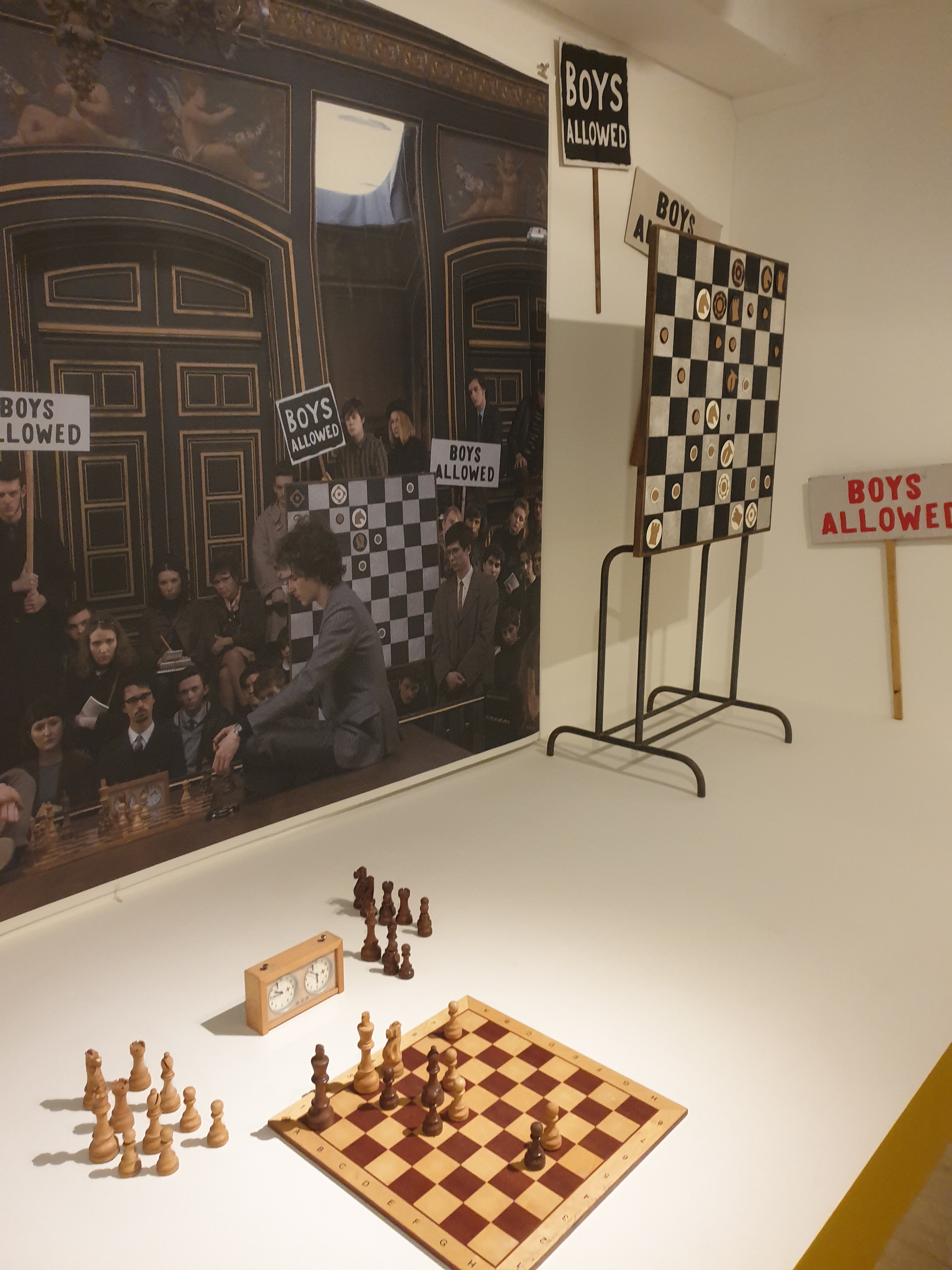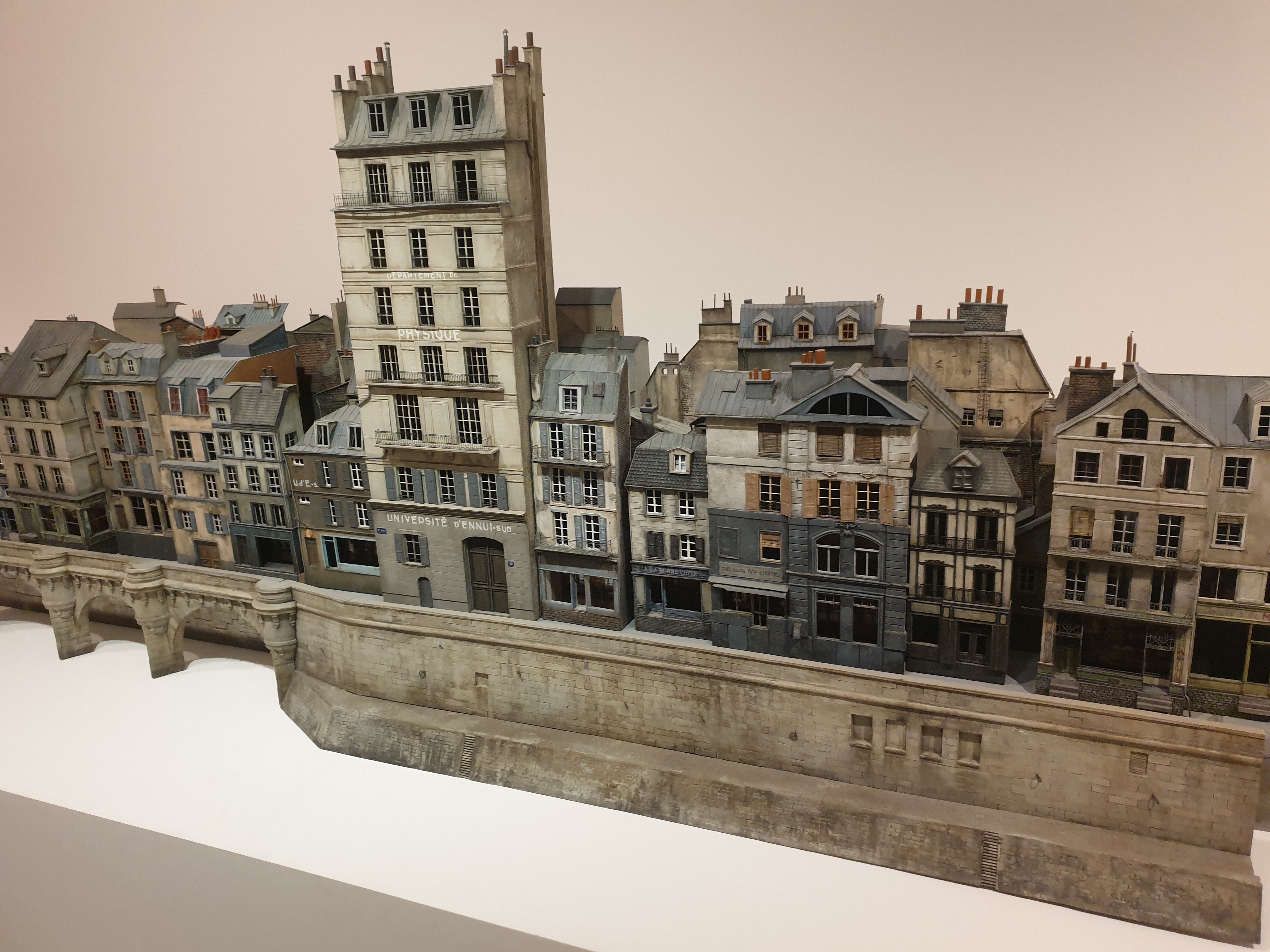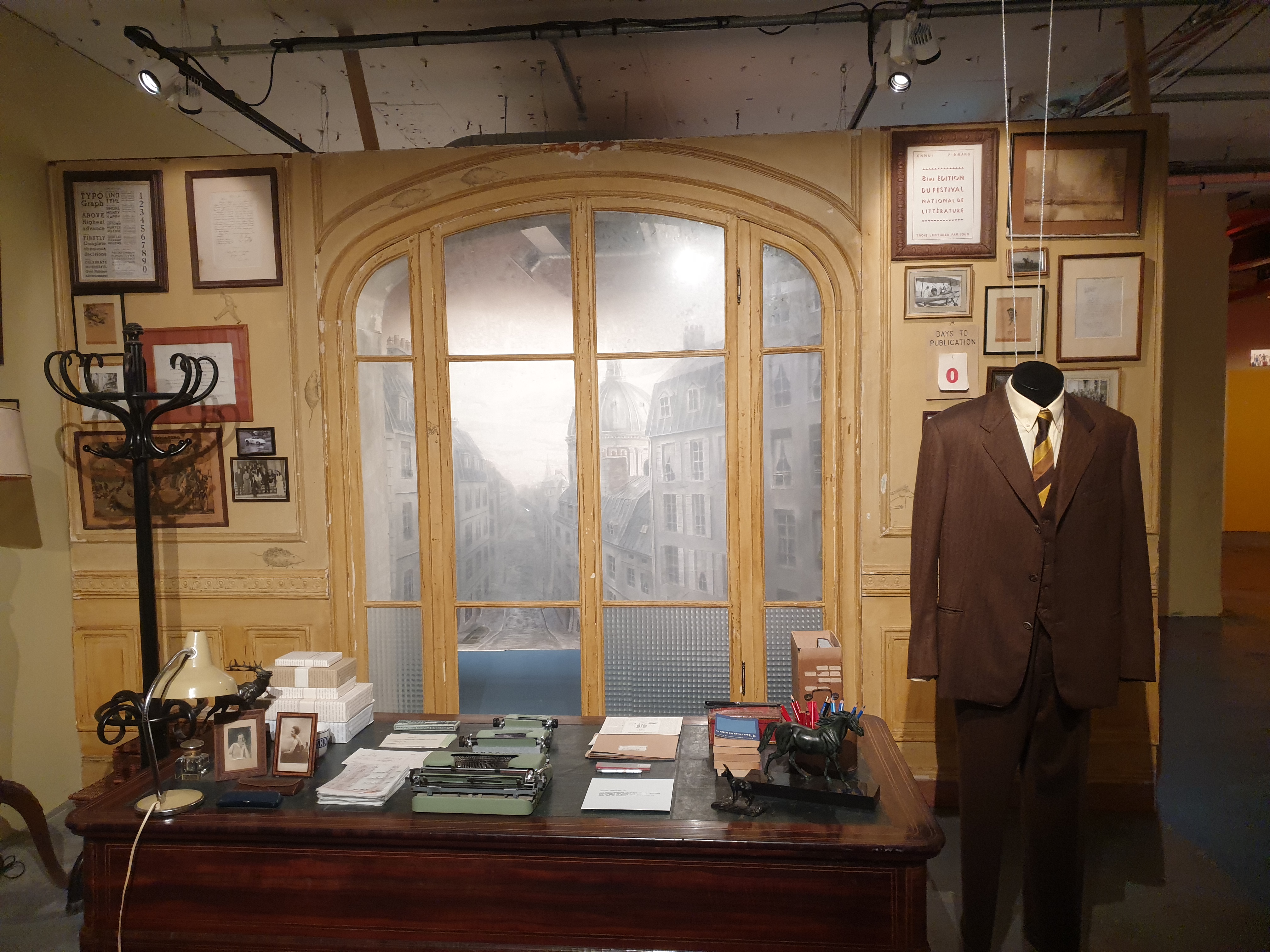It’s been a long time since I’ve had time to write about a film. My friend and I got lost searching for The French Dispatch at the cinema, the screens split across two buildings. We sat down with the film already in introduction, its’ colour and verbiage already spilling over us. Divided into article sections of the fictional paper ‘The French Dispatch of the ‘Liberty, Kansas Evening Sun (which is also the full title of the film)‘, it works to provide a cinematic boiling down of the engagement with an artefact now more absent from our lives. What unravels from this yarn of spiralling articles, is a series ofshort successions of visually arresting films which play with minatures and scale to such an extent that most frames dance before your eyes. The French Dispatch is a satellite publication of its’ fictitious publishing house, but the whole film works as a satellite in the cinematic space we live in, sending out analogue frequencies and signals about a world just past.
Based on The New Yorker, a publication whose literary prestige and acclaim rival most levels of success, Anderson (who owns hardbound editions dating back to the 40s) sends his own erractically drawn and far flung stories flying out on coloured paper. Echoes of the May 1968 French protests fill the story of ‘Revisions of a Manifesto – by Lucinda Kremmenz’ (partly inspired by writer Mavis Gallant), while ‘The Private Dining Room of the Commisioner – by Roebuck Wright’ (partly inspired by writers A.J Liebling, James Baldwin and Tennessee Williams) draws deep midnight film noir blues across the fictional town of Ennui-sur Blasé, where most of the action is located. ‘The Cycling Reporter – by Herbsaint Sazerac’ (partly inspired by Joseph Mitchell, Luc Sante and photographer Bill Cunningham) is a gentle and humourous tour of the town of Ennui, conducted by Owen Wilson falling through the delicate French architecture of the streets, and their lovingly adored vices. The other main article is ‘The Concrete Masterpiece – by J.K.L Berensen’ (partly inspired by Rosamond Bernier), presented in the film as both article and art lecture (by an ‘art talker’). Here is a journey into the heart of the artistic process as it is seen from those who write about it, rather than trying to authentically mimic what that experience might be like.
If it sounds confusing and entangled, that’s because it is. It is a work which reflects how magazines unite perspectives into a single issue, not by making the film have a consistent singular ringing tone to its’ music, but by playing a range of harmonies and stacking a range of perspectives side by side to each other. I used the word verbiage earlier to take a swipe at it, but I can also see it is a work of deep lyrical mystique, one where the very act of listening is far more actively necessary to process the wit, intrigue and melancholy that so lovingly unfolds across the dimensions of Anderson’s canvases.
This film is “actually three things,” Anderson says: a collection of short stories (“something I’ve always wanted to do”); a tribute to The New Yorker and “the kind of writer” it is famous for publishing; and an ode to “French cinema.”
Zach Johnson, “The French Dispatch A Love Letter to the Written Word”
It is a phenomenal world, the circus of illusion and trickery in full display. The stellar cast is abounding in a world full of delicate little moments of visual ingenuity (filmed by longtime collaborator Robert D. Yeoman). Items burst in and out of frames continuously, entire tableauxs are arranged of dozens of figures posed left to right (or vice versa) as the camera drifts over them. The scale and shape of architecture is made malleable for gentle affectation of scenery by puppetmaster strings unseen. The film twirls with delight at its’ own magic, positively bursting with details. Few films world feel as lived in, so rich with supplementary material to enfold you, scattered book titles and snappy art references filling the film floor to ceiling. I admire his sense of place, his dedication to elaborately staged histories of characters; their lives and their prides. It takes remarkable skill to create such positions of cinematography and mise-en-scène, a keen eye for illusion and depth and the intimate boundaries between the eyes and the projections they witness.
Assembled too, with abundant glee, is a cast who go headstrong into the performance of the film, every actor whirled into the discordant winds of Anderson’s style. Subsumed are Benicio Del Toro, Léa Seydoux, Timothée Chalamet, Frances McDormand, Jeffery Wright, Saoirse Ronan, even Henry Winkler; while old favourites such as Jason Schwartzmann (who receives story credit), Owen Wilson, Bill Murray, Edward Norton, Adrian Brody and a continuous riot of actors and actresses. Apparently Wes Anderson even knows all his extras by name, curating with them canvases of a wry nature with a formal grace and precision. The techniques to display the human form are on display in a slim and subtle way, one eyebrow constantly raised at the missteps and bumbling figurines at work and play in a minaturised world. Although I experience issues with Andersons’ often extreme suppression of emotion in performance, this style continues to allow the performers room to shine lights into the dark spaces of their acting range; often requiring a demanding stillness with a shrewd and witty distance. This is then tempered with restrained, incisive breakthroughs of emotion, like bubbles reaching the water’s surface and then disappearing. The spaces and performers are laid out in architectural sectioning, portions of spaces (and the perspectives when viewing them) give room for the humans onscreen to tug at the strings of its’ loose cinematic reality, to the film’s benefit.
I would not be honouring the film’s loose chronological style if my own writing did not take the form of a series of thoughts running parallel, as oppposed to any review. The French Dispatch is a world made of up of various chunks of creative grey matter splattered onto the walls, its’ intersections with the world of art, student politics, romantic ideology, food, crime and various perspectives of theatre is an explosion of tone, sardonic and genuine together. It is a smörgåsbord, various visual canapes and dishes served with treats. I can’t always find the film convincing and I can’t return easily to such a dense work, but I would struggle to find a moment in the film not twisted around some delightful root of creative growth, some optical interaction that at least attempts to engage a more cerebral part of the viewing experience.
It is best for me not to go on any longer, lest I overwhelm thee with any more expository information or analysis. Even the film is exhaustingly overstuffed, I found myself zoning out by the time we reached the third major story simply due to the sheer amount of information being processed; my brain just couldn’t fit any more in. Does that mean that the film is easily watchable, digestible, Wes Anderson’s best film? I don’t think those are necessary questions to entertain alongside a work which so spasmodically grips the rivers of culture and tries to transfer them (with spillage everywhere) into the form of a film, one hour and fourty-eight minutes. It gently remoulds history, art, politics, love, imprisonment, freedom; it weaves them together in a pastiche of newspaper atmosphere. The worlds’ stories are there for you to be entertained by, not to find them all entertaining. A collage of symbols gets worked out by the reader, and they decided whether it’s worth the paper it’s written on (or celluloid it’s printed on). It works like a deliberately charismatic attempt to see the tragedies and brutalities of our pasts to be off to the side of our lives not always front and center, which somehow softens their often corruptive blows. A collage, a maze, a scaffolding framework of how life is sometimes experienced and shaped by the circumstances around it, rather than assuming that any one story is “the truth”.
Here the characters engaging with the silliness of the world’s frayed edges to convey numerous sad exposures of the modern human condition. Here lies a cast in bedlam, a cinematography in a perfectly sculptured riot, skeletons and mechanisms and stageplay abound. It is a work by a master of his craft, so recklessly abandoning conventional filmmaking mechanics to create a work of shining lumosity, uneven in places burning hot.
Signing off from our broadcasting station,
Alex
(04/12/2021)
(05/12/2021)
Alex
Signing on from our broadcasting station,







These are some pictures I took at to day’s exhibition at 180 The Strand. Rarely do you get the experience to see the raw materials of set design and production on display as here. The level of detail on display is astonishing and I am struggling to put into words how exciting it was to be in a space of a film like this, after enduring the pandemic. Looping soundtrack sections accompany you through an extremely deep dive into the subterreanean sewers of a film’s actual construction, making my experience of the film far more visceral. At the end there’s a cafe done up in the style of the film’s one, and it is a bizarrely nice way to end the exhibition.






These paintings done by Sarah Knopp (except for the last one I believe) are astonishing, displayed here in this sequence is really breathtaking, and the full story behind their creation, their abstract collaging of paint and working on them right up until the moment the camera’s rolled for that scene, mark a beautiful intersection of sculpted art inside a film’s world. It is a titan-sized mural to the film’s fusion of artistic elements to create a convincing enough scale replica of a modern art genius’ ambition.








The post can’t handle much more information, and I feel like I leave this issue of my own publication in pictoral wonder, rather than continue to expound about the film’s minutae or merits or flaws. It is a vibrant, special piece of cinema in a time which often struggles to find people with enough vision to make the whole world their playground. It is a honorary tribute to the writers who inspired the film, names who are treated with the dearest life in his work.
Cut! Print!
Alex

